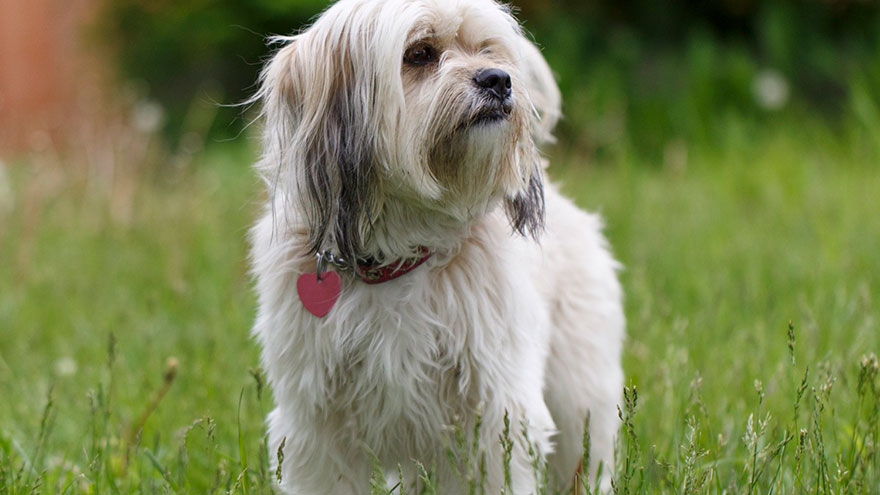About Lhasa Apsos
Lhasa apsos are small dogs with a big personality. They do not suffer fools, inquisitive animals or small children gladly. What is more, owners frequently report that lhasa apsos are strong-willed and hard to train.
On the flip side, they are one of the most long lived breeds that are also known to be exceedingly loyal to their one, chosen human caretaker. Read on to learn more about Lhasa apsos, their fascinating history and for whom they make the perfect pets.

Geography
Lhasa apsos originated in Tibet. Buddhist monks began a breeding program with local dogs. Their goal was to raise animals that performed the function of alert dogs in the oftentimes remote and lonely monasteries of the Tibetan mountains.
Over the course of time, the dogs became known for their extreme sense of hearing and also their deep barks, which are in direct contrast to their rather diminutive bodies. The American Kennel Club reports that the literal translation of the dog breed’s name means “Bark Lion Sentinel Dog.”
RELATED : Lhasa Apso : 10 Most Common Question
Features
Male Lhasa apsos weigh about 15 pounds. They usually stand 11 inches tall. Females of the breed weigh 13 pounds and usually stand only 9 inches tall. Show dogs have a long, straight coat. Lhasa apsos that are kept as pets are frequently trimmed with a teddy cut to keep the coat clean and devoid of debris. Show dogs must have a long tail and a black nose.
Their eyes must not be too close together, and there is a certain look, sometimes described as the “in your face” expression, that show-quality dogs must possess. Check out the Lhasa apso detailed head and skull study to familiarize yourself with the breed specifications.
Behavior
The Lhasa apso is one of the few breeds of dogs that does not enjoy vigorous exercise. This makes them perfect pets for the elderly or those living in apartments or condos. A good sized yard is oftentimes sufficient for their outdoor needs.
When their hair is kept long, these dogs enjoy spending time outside, even in cold weather. Although not as adept at climbing as cats, Lhasa apsos can balance very well and even climb up small obstacles. Because this breed is very territorial, they do not do well as members of a pack or in a multipet household.
RELATED : Lhasa Apso Training Guide
Considerations
Lhasa apsos are hypoallergenic dogs. This means that they do not shed dander the way other dogs will. In this manner, they mimic the bichon frise, poodle or Maltese, making them a good choice of pet for a person suffering from allergies.
On the downside, this breed is very aggressive and because they are small, they are often underestimated by children and adults. Lhasa apsos are not good dogs for younger children who have not yet learned how to respect a dog’s space.
RELATED : Lhasa Apso Health Guide
Warning
Lhasa apsos are genetically predisposed to blindness. Because this is one of the few breeds that routinely live past the age of 15—the American Lhasa Apso Rescue reports that it is not unusual for this breed to live for 20 years–it is highly likely that your dog will spend the last years of its life living in blindness.
Prospective dog owners need to be aware that the blindness can strike at any age and must be willing to accommodate the pet. Moreover, blindness makes these dogs even more aggressive, and small children and dogs should not interact if the pet is losing its sight.
You Might Also Like : Lhasa Apso Breed Information

